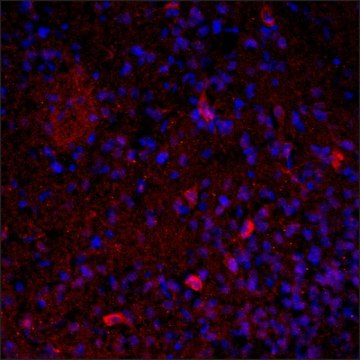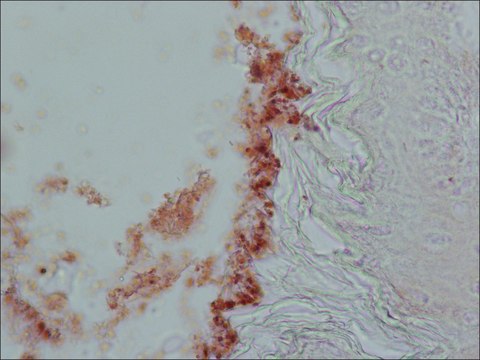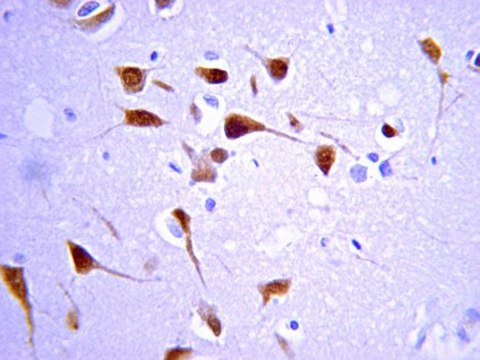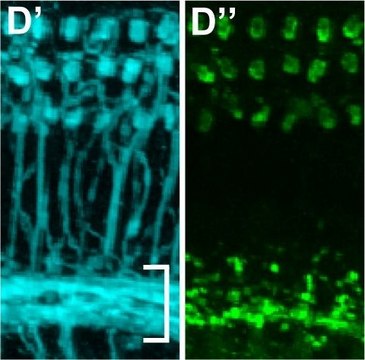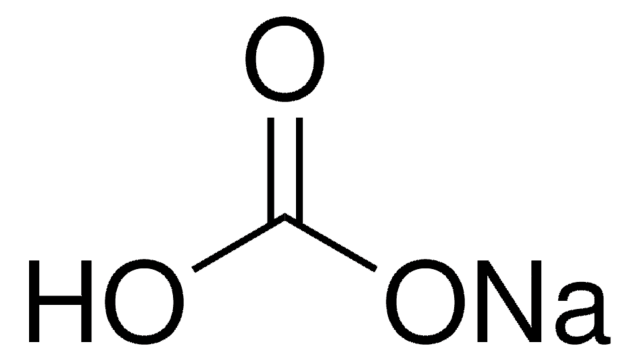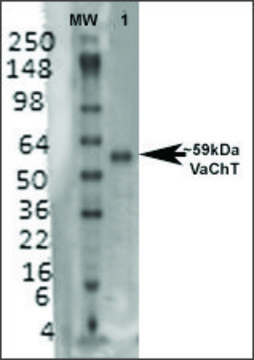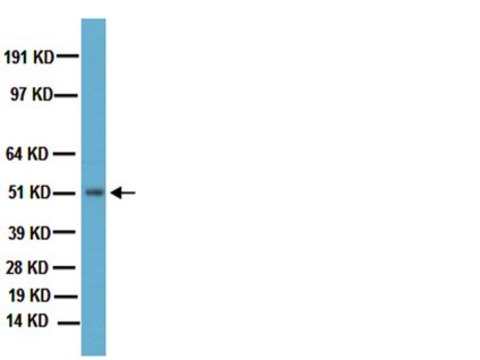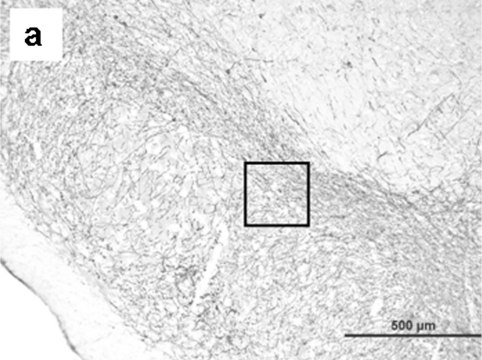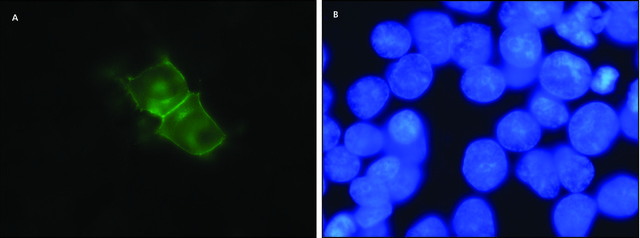V5387
Anti-Vesicular Acetylcholine Transporter (VAChT) antibody produced in rabbit
affinity isolated antibody, buffered aqueous solution
About This Item
Recommended Products
biological source
rabbit
conjugate
unconjugated
antibody form
affinity isolated antibody
clone
polyclonal
form
buffered aqueous solution
mol wt
antigen ~70 kDa
species reactivity
rat, human
technique(s)
immunohistochemistry (formalin-fixed, paraffin-embedded sections): 1:1,000 using 4% paraformaldehyde perfusion-fixed, floating tissue sections of rat brain
indirect immunofluorescence: 1:500 using NGF-treated PC12 cells
western blot: 1:2,000 using rat brain extract
shipped in
dry ice
storage temp.
−20°C
Gene Information
human ... SLC18A3(6572)
rat ... Slc18a3(60422)
Specificity
Immunogen
Application
Immunohistochemistry (2 papers)
Physical form
Regulatory Information
Choose from one of the most recent versions:
Already Own This Product?
Find documentation for the products that you have recently purchased in the Document Library.
Our team of scientists has experience in all areas of research including Life Science, Material Science, Chemical Synthesis, Chromatography, Analytical and many others.
Contact Technical Service